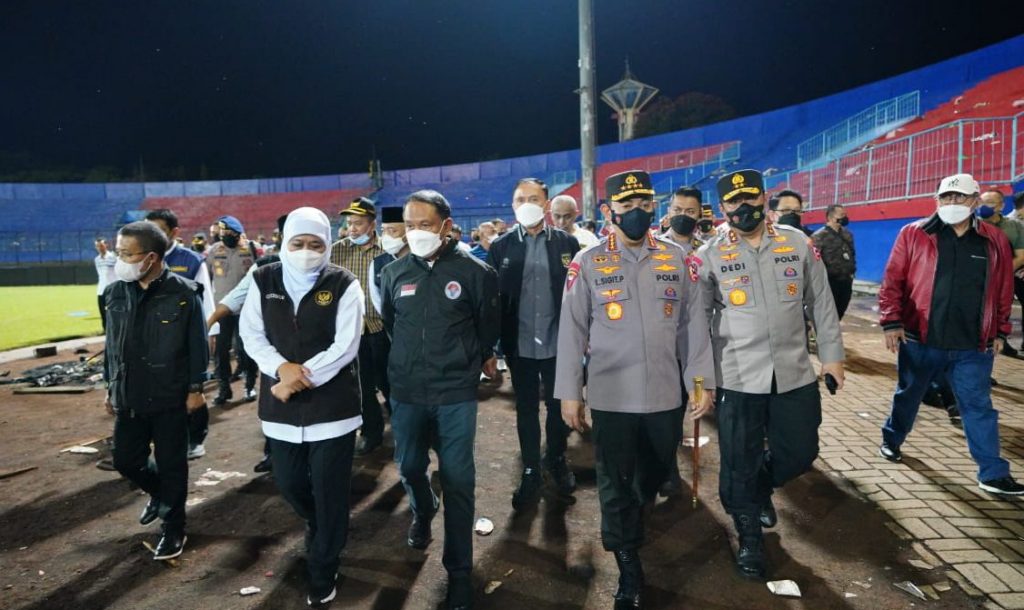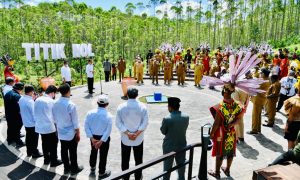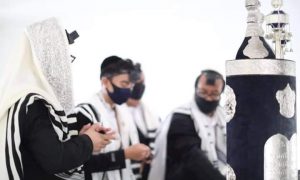On Oct 1st, 2022, 33 years after the Hillsborough disaster in Sheffield a stadium tragedy reoccurred. This time, one of the world’s worst stadium disasters happened in Kanjuruhan Stadium, Indonesia, with at least 125 supporters killed at a match between Arema FC and Persebaya FC. After losing the game 2-3, upset Arema supporters reportedly invaded the pitch. The authorities in Malang, East Java fired tear gas to “control” the crowd, triggering a stampede among supporters. Ironically, although supporters followed the FIFA order of flare prohibition, the authorities in Kanjuruhan armed themselves with tear gas which they shot into the mostly peaceful crowds.
This event is now the pinnacle of tragedies in Indonesia’s sporting history. On one side, “rivalry” is a distinct character of football supporters, which is marketed as a unique selling point. On the other side, do the labels “violence” and “hooliganism” portrayed by mainstream media truly reflect the rivalry of Indonesian supporters? Negative narratives, such as “violence is not uncommon” and “police hunt Aremania” (Arema supporters) who kill Bonek (Persebaya supporters), are produced by media at all levels, constructing bad representation of Indonesian football fans as offenders. Such stories place supporters as citizens’ enemy. Moreover, following the corporate media logic of “prime time”, kick-off was in the evening (at 8:00 PM). Due to the broadcasting rewards, New Indonesian League administrators rejected an afternoon kick off time suggested by the police. Supporters are indeed the targeted audience for football broadcasts, yet a sensationalising media predominantly frame them as hooligans.
Prior to the match, at a trilateral meeting between both clubs and the Football Association of Indonesia (PSSI), it was agreed that Persebaya supporters would not attend. The assumption was that “no rivalry” equated to “no violence.” The depth of this logical fallacy was illuminated as Arema supporters became the victims of bloody violence unrelated to rivalry. The possibility that the number of tickets sold exceeded the stadium capacity is also generating unanswered questions.
Manipulation of football supporters by political elites is not uncommon. Football supporters are also a voter base in regional and national level elections. Eddy Rumpoko, the 2007-2017 Mayor of Batu (a city in the greater area of Malang), for instance, established connections with Arema FC and supporters using his city budget resources. The former mayor was sentenced to prison in 2019 and punished again in 2022 because of corruption.
Most of the leaders of PSSI are closely affiliated with political parties or retired army/police commissioners, who act in unison to serve the interests of the oligarchs of Indonesia. For example, Eddy Rumpoko was one out of nine nominees in PSSI Chairman election (2016-2020). Furthermore, PSSI pointed fingers to other stakeholders, including banning Arema FC from playing matches at their home stadium and issuing fines. While the government task force highlighted the unprofessionalism of PSSI and Indonesian football league stakeholders, PSSI rejected their recommendations. The credibility of PSSI and the police is said to be falling apart at the seams, reflected in declining trust among football supporters.
The Kanjuruhan disaster shows that Arema fans, like other supporters, are victims of the commodification and politicisation of Indonesian football. The pot of supporter fanaticism is continually stirred by broadcasters and is marketed to consumers of football. The supporters are also vulnerable to a violent, corrupt, and precarious Indonesian football structure. Supporters were killed by the violence of the state, yet they are the ones who are portrayed as “rioters”. Not only victims of the structure, fans remain trapped within a conflict of interests between predatory and rapacious actors in the turbulent world of Indonesian football.
In the era of football commodification and democracy in post-reformasi Indonesia, supporters should be placed as “original fans” rather than “superficial consumers”. With the idea of mediatisation, supporters seem to play a greater role in claiming their position. Supporters need recognition, including an environment in which to express their collective identity and to articulate their role as active citizens. Starting from the mourning, the public petitioned for the rights of the Kanjuruhan victims, particularly those who were killed. Responding to this catastrophe, there were at least six petitions on change.org, from “refusing tear gas” (signed by around 50,000 people), “urging PSSI chief and management to resign” (signed by around 18,000 people) to “reformasi PSSI” (signed by around 300 people). The presence of these digital platforms facilitates the coordination and collection of signatures and signifies solidarity among oppressed supporters.
Football has increasingly become “family friendly” entertainment, consequently rights should be (re)distributed equitably. Here, safety must be the top priority. The game’s authorities should be responsive to football fans’ characteristics, including the tendency for mass gatherings and established rivalries as is exemplified in major footballing leagues around the world. Profit maximisation, including media ratings and ticket sales, must be revisited. Midday kick-off times and below capacity ticket sales are some alternatives. FIFA has advised against the use of tear gas inside stadiums. The Hillsborough disaster brought about regulatory changes for safety inside stadiums and those in control of large crowds. One of the fiercest footballing derbies in world football, Celtic and Rangers, has shifted the kick-off time from evening to midday to prevent potential violence between supporters in Glasgow.
Lastly, representation of supporters is key to reforming footballing structures in Indonesia, liberating the code from the current oligarchical system. Supporters, as active citizens, are the counter to the “violence” narrative. Instead of frequently attaching the term “hooligan” to supporters in media coverage, other roles taken by supporters as active citizens, such as anti-racism activism (hoomanity-hooligan for humanity from IG @bdgsupporteralliance) and resistance to oppression (football fans enemy from IG @makassarsupporter.collective), should be voiced, especially in everyday discourse. The idea of hoomanity shifts the image from brutal to caring hooligan, successfully inviting supporters to participate in fundraising to face the initial pandemic (e.g., distributiing hand soap and hand sanitizer) and providing aid for flood victims in the area. Their engagement shows camaraderie among supporters across Indonesia dealing with Kanjuruhan tragedy. The message reminds supporters that their enemies are not supporters of rival team. Yet, their “true enemies” are dictatorial police forces, a broken PSSI, as well as management and capital holders, that degenerate the team(s) and the essential meaning of football.
Removing and dismissing some officials, such as the police officers who fired tear gas, is not a silver bullet, as it only tackles the symptoms and not the root cause of the chaotic structure of Indonesian football. The configuration of Indonesian football is problematic, reflecting the Indonesian democracy moving from stagnation to regression. Commercialisation and politicisation of football establishes a pseudo-modern football with corrupt mismanagement. However, mediatisation provides opportunities of media manifold for football supporters as the victims to create and construct the meaning of their environment (e.g., supporter not customer from IG @bdgsupporteralliance and how poor management performance unfolded from IG @frontlineboys33). From the above stories, football fans communities construct their mediatised world, from in-person literacy, information sharing and networking on various digital platforms (e.g., WhatsApp, Twitter, Instagram, and change.org), mediated communication coverage, to performing offline activism. While supporters work to create the football culture from below, authorities ought to take major steps, including recognition, rights redistribution and representation, to create a football system from above in which it desists from slaying the golden goose through systematic violence.
 Facebook
Facebook  Twitter
Twitter  Soundcloud
Soundcloud  Youtube
Youtube  Rss
Rss 


